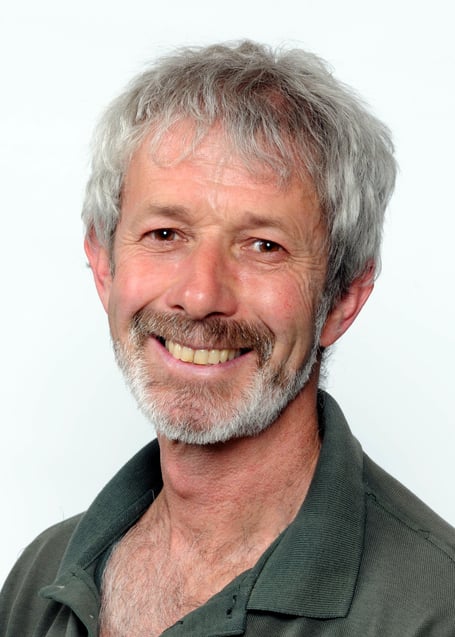THREE treatment works discharged raw sewage for a total of 1,078 hours over the course of a year, it has been claimed.
Cllr Chris McFarling (Green, St Briavels) also listed a number of other places across the Forest where there had been “pollution incidents”.
He made the claims at last week’s full meeting at the Forest Council as he put a motion calling for action on pollution of rivers.
“I have three sewage treatment plants in my ward and they have all discharged raw sewage into the Rivers Wye and Severn last year.
“They may well continue to do so as not all spills are recorded.
“Welsh Water plant at St Briavels discharged for 587 hours, Newland for 451 hours and Severn Trent Water’s plant at Alvington for 40 hours into the Colne Brook.
“Sewage pollution is also recorded at Lydbrook, Mitcheldean, Coleford, Cinderford, Lydney, Sedbury, Hartpury and the Cannop Road pumping station which overflowed 21 times for 40 hours directly into the Cannop Brook.”
The discharges at St Briavels, Newland and Alvington totalled 1,078 hours or the equivalent of 45 days.
Cllr McFarling added: “I have residents in St Briavels who recall using the Wye Valley bus, watching through the window a river teeming with leaping salmon.
“Now it is more akin to a back-up sewer with many species likely to go extinct in a few short years.
‘‘The aim of this motion is, like other councils are doing, to encourage the water companies to put in the infrastructure needed as a matter of urgency; to introduce planning policy to support this; to encourage our residents not to throw wet wipes, pharmaceuticals and plastics down the toilet and to do what it can, within the resources available, to work with partners to actively restore our rivers and streams to their once beautiful and bountiful conditions.”
The motion, which was accepted 20 votes to none with three abstentions, called for planning officials to look at the possibility of finding out which treatment works would serve large new developments and whether the impact on the number and duration of discharges could be assessed.
It also asked for the council’s political leadership to work with other authorities facing similar issues “in order to best understand how we can use our influence to quickly reduce and mitigate the damage done to our watercourses.”
Cllr McFarling said: “Housing developments are connected to an antiquated sewerage system which hasn’t the capacity to deal with today’s volumes.”
Cllr Simon Phelps (Ind, Westbury) said Cllr McFarling had not mentioned Longhope and Westbury.
He said concerns had repeatedly been raised about the pumping stations at Stantway and Northwood Green in Westbury parish.
He added: “When concerns are raised with the Department for the Environment, particularly about the Longhope Brook which is recognised as one of the most polluted large streams in the county, very little action is taken.
“I would question whether this council has the authority to take stronger and more forceful measures with these bodies or should we taking this up with the Secretary of State for Environment and insisting something is done in a more business-like fashion by the department of Environment?”
Cllr McFarling said all pumping stations discharged waste in 2021 and while the council did not have the power to do anything, he thought it should at least try,
He said: “We don’t have authority but we can only try. It is our rivers that are being polluted
“This motion is asking the council to do what it can within the resources available to stop our river wildlife from disappearing.
“We identify as the land between two rivers, if those rivers die it is a poor indication of what we stand for.”
Cllr Alan Preest (Con, Lydney East) said that asking the council’s scrutiny committee to work with water companies and environmental groups on the issue would duplicate work being done by Gloucestershire County Council.
He said: “We need to protect our water environment but that does not need the duplication of recommendations already being actioned by the county council.”
Cllr McFarling said his motion complemented the work by the county council.
A Welsh Water spokesperson said: “Much of our sewerage network is ‘combined’ – meaning it collects the rainwater from roofs and other surfaces, as well as wastewater from residential properties. This system is not ideal and much of it was built 100 years ago. This means when we have high levels of rain the volume of flow that comes into wastewater treatment works is much higher, but its highly diluted as its mostly rainwater.
“This excess wastewater goes to a ‘storm tank’ initially, which is a large tank at the start of the treatment works which is designed to catch the flow that we can’t treat right away. When the weather dries up we then pump the wastewater held in the tank back to the treatment works for full treatment. If there is so much rainwater that the storm tank fills all the way up, then the storm water will discharge to the environment.
“As there would have been heavy rainfall, it should be going to the environment where the river is also very high and so will be even further diluted.
“Cllr McFarling is quoting figures that we provide on our website so is correct that these are the number of hours our storm overflowed for these works during 2021. This year we installed new monitors and undertook maintenance to the inlet of the works at St Briavels and Newland to help reduce the number of times the storm discharge operates; we will continue to monitor these to ensure they achieve the desired results.
“We have committed to invest more than £836m to protect the environment, and in the decade to 2025 we will have invested approximately £1.5bn in improving and maintaining our wastewater network to improve river quality. We also publish our data online and are committed to being open and honest about our operations.
A Severn Trent spokesperson said: “Severn Trent is working hard to improve the quality of the region’s rivers and is currently ahead of sector targets.
“We’ve committed that our operations will not be the reason for any stretch of river in the whole Severn Trent region to be classified as unhealthy by 2030 .
‘‘Severn Trent is currently responsible for 17 per cent of reasons for rivers in our region not achieving good ecological status and we’re confident that by the end of this year, this will reduce to 15 per cent, with the remaining 85 per cent of reasons attributed to other sectors. We’re consistently recognised for our industry-leading performance and this year committed to reducing the use of storm overflows to an average of 20 per year by 2025 - we’re also continuing to invest £100m a year to go even further in improving our region’s rivers.”



Comments
This article has no comments yet. Be the first to leave a comment.